Africa, while mainly desert, is a diverse continent with some countries not resting on the equator. As the second-largest and most populated continent that has a blazing climate, you may have wondered, ‘Does it snow in Africa?’
Yes, it does snow in Africa, but African regions experience it differently. South Africa gets snow from June to August, while Mount Kenya in East Africa is snow-capped year-round. The Atlas Mountains get snow from November to April and September to June on the peaks.
Read on because this article answers more than ‘Does it snow in Africa?’ We curated in-depth information that sheds light on the preconceived notion that the continent offers nothing but heat. We also included snowy destinations for tourists and African regions worth penciling in on your next winter adventure.
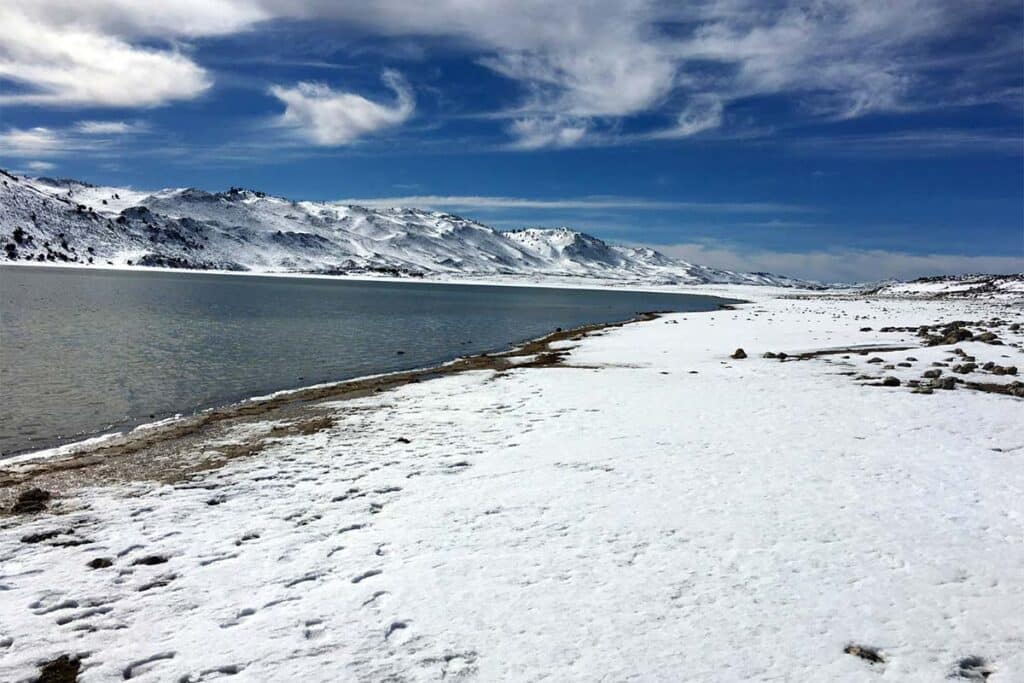
Rare African Snows
Does Africa get snow? Rarely, but the following events brought rare to the next level.
In September 1981, Johannesburg recorded up to 1 meter of snow in some areas.
In 2013, the middle east population in Cairo, Egypt, was caught off guard by an unexpected snowstorm, a first in over 100 years.
At the Sahara Desert’s edge, snow fell on the Algerian town of Aïn Séfra, sometimes called the ‘gateway to the desert’ in December 2016. While there’s no official record, eyewitnesses claimed that the accumulated snow measured between 1 and 15 inches. Before this event, the town’s first snowfall was in February 1979.
Where Does It Snow in Africa?
Snow in Africa is rare and is mainly in the mountains. However, some African countries have experienced chilly weather and snow.
South Africa
Town temperatures in South Africa can be humid, cold, or snowy, dictated by the country’s position on the equatorial plane.
In Sutherland, where snowfall is heavy, it can drop to -16°C during the winter season from June to August.
The towns of Rhodes (annual winter event Rhodes Trail Run), Prince Edward Islands, and Cederberg also get their share of snowfall. Hogsback, South Africa’s Hobbit Land, sometimes becomes a snowy fairytale with its snow-capped mountains.
In the eastern Great Escarpment, Drakensberg experiences regular snowfall and prides itself in its Tiffindell Ski Resort. The Eastern Cape province only experiences regular snowfall three months a year, so the resort uses snow-making machines from June to August.
Western Cape on the southwestern coast of South Africa boasts of five snowy destinations:
- Matroosberg Private Nature Reserve
- Forgotten Highway Manor
- Guinevere Guest Farm
- Mont Rouge
- Klondyke Cherry Farm
Morocco
Where else does it snow in Africa? In Morocco, but its winter temperatures vary, owing to its five climate zones:
- Mediterranean
- Sub-Mediterranean
- Continental
- Alpine/Highland
- Semi-Arid
Depending on the climate zone, temperature low could hit from 18°F to 23°F anytime between December and February. Snow often falls in some parts of the country during the winter season, particularly in the northern mountains and the central zones.
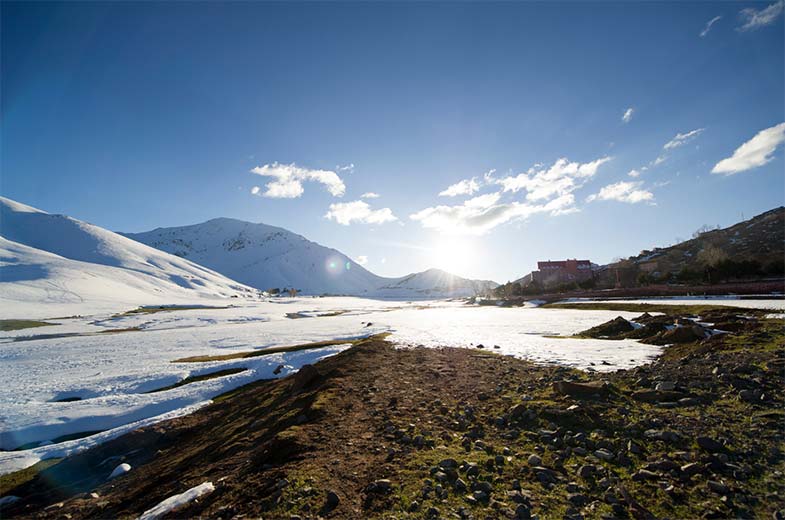
The small city of Ifrane gets lots of snow and recorded a temperature low of -11oF in 1935, the lowest experienced in the continent.
Mischliffen (Michlifen), a small mountain town near the Meknes-Tafilalet Region, has a ski resort inside the cedar forest that locals fondly call the Atlas Pearl. It has two chair lifts and half a mile of ski slopes.
Oukaïmeden, a mountain village in the Atlas Mountains, offers lifts, hotels, and rental facilities in its ski resort, the highest in the African continent, standing at over 10,700 feet.
Expert adventurers brave the harsh winters of Azilal, a province in the Atlas Mountains, in these mountain villages:
- Zaouïat Ahansal
- Aït Bouguemez Valley
- Tagleft
- Aït Ouqabli
- Amsfrane
- Anergui
Johannesburg
Johannesburg, South Africa’s largest city, experiences a temperature low of 2°C in June and July, but snowfall isn’t frequent, skipping years and happening at different months from 1956 to 2012.
Lesotho
The temperature in this southern African country can drop to 0°F (highlands) and peak at 82°F. Its lowest point of 1,400 meters is the highest compared to the rest of the world, majorly contributing to the small country’s (barely more than 30,000 square kilometers) chilly weather.
The winter season at Lesotho is from June to August, encouraging very cool weather and snow in the highlands. At its capital, Maseru, snowfall is year-round and accumulates up to half an inch.
Afriski Mountain Lodge and Resort in the Maluti (Maloti) Mountains is the only ski resort in Lesotho, offering a thousand feet of skiing experience from its peak of 10,500 feet to the base of 9,500 feet. It has three skiing courses and a snow park.
June is the coldest month in Lesotho, the coldest country in Africa.
Snowy African Mountains
Due to their high elevations, mountains in various parts of Africa have varying degrees of coldness and snowfall.
Mount Kenya
Does it snow in Africa? This mountain at Kirinyaga in East Africa says it does, and it can be as cold as -10°C with 11 glacier formations, owing to its highest point of over 17,000 feet. Snow and rainfall on this mountain from March to December, but it’s mostly windy throughout the year.
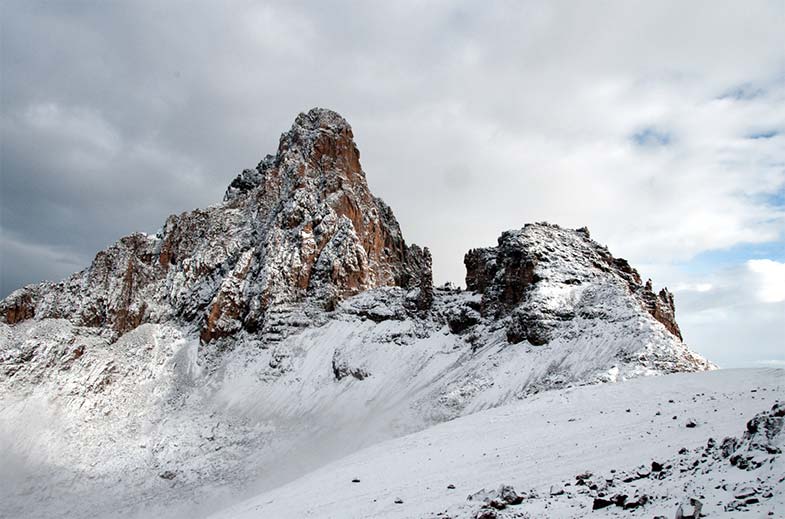
Table Mountain
As a flat-topped mountain measuring nearly 3,600 feet, it’s among the unique African attractions that overlook Cape Town. It recorded light snow dusting at the Devil’s Peak and Front Table from 2010 to 2013.
Simien Mountains
From October to December, the temperature at this Northern Ethiopian mountain in East Africa can get extremely cold at -2°C without forming glaciers. Apart from snow, rain also falls from November to March. However, there are no lifts or ski areas in Ethiopia.
Atlas Mountains
This mountain range experiences snow from November to April, but snowfall can also cover the mountain peaks from September to June. It stretches across Tunisia, Morocco, and Algeria, with Jbel Toubkal as its highest peak at nearly 14,000 feet.
Mount Kilimanjaro
Located in Tanzania, East Africa, Mount Kilimanjaro is the highest mountain (over 19,000 feet) in Africa, with a temperature range of -15°C to 27°C. It also is the highest single free-standing mountain in the world, with three glacier formations:
- Furtwangler (named after one of its first climbers in 1912)
- Rebmann (existing since the 1800s)
- Ice Fields (northern is closest to the summit of Uhuru Peak and is the largest)
Snow caps the mountain anytime but more frequently in December, with some snowfall from June to September. Interestingly, Mount Kilimanjaro is warmest in September.
The mountain’s sides experience the same weather in diverse ways. In the southern hemisphere, there’s more rainfall than in the north during the rainy season, which happens twice a year, from March to May and from November to December.
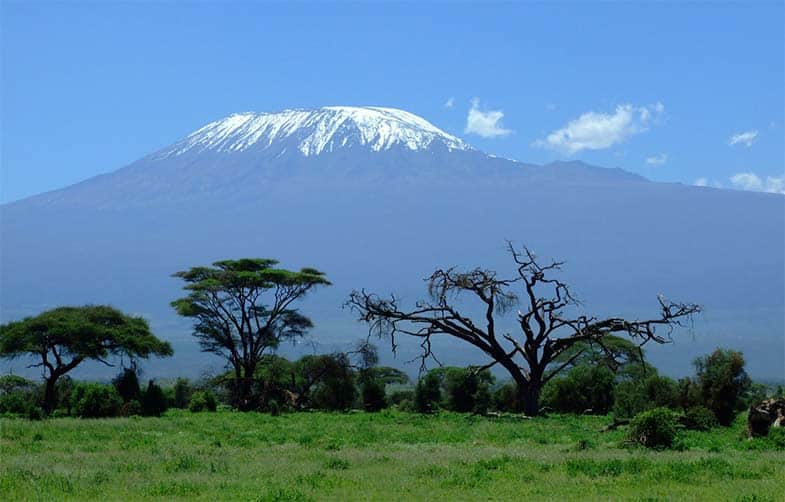
Rwenzori Mountains
The temperature at this mountain at the border of Uganda and the Central African Republic ranges from ‑5°C to 20°C, giving it an alpine climate. Due to its low temperature, the Rwenzori Mountains always experience snow, rainfall, and glacier formations across three mountains that span over half a square mile.
How Often Does It Snow in Africa?
Snow occurs yearly or semi-annually in some parts of Africa, focusing on mountain tops. Mount Kilimanjaro and Mount Kenya experience snow year-round, but you need to climb high to experience it. Snowfall could last up to a week but could extend the higher the altitude is.
Here’s a quick look at snowfall frequencies across various parts of Africa.
| Annually | Semi-Annually |
|---|---|
| Algeria | Botswana |
| Democratic Republic of Congo | Cameroon |
| Ethiopia | Egypt |
| Kenya | Libya |
| Lesotho | Madagascar |
| Morocco | Mozambique |
| Rwanda | Namibia |
| South Africa | Zimbabwe |
| Tanzania | |
| Tunisia | |
| Uganda |
How Much Does It Snow in Africa?
The intermittent snowfall in South Africa from May 1956 to August 2012 recorded up to about 4 inches in the southern suburbs.
Sutherland gets up to 0.31 inches of snow in June (the first winter month in South Africa), 0.24 inches in July, and 0.31 inches in August.
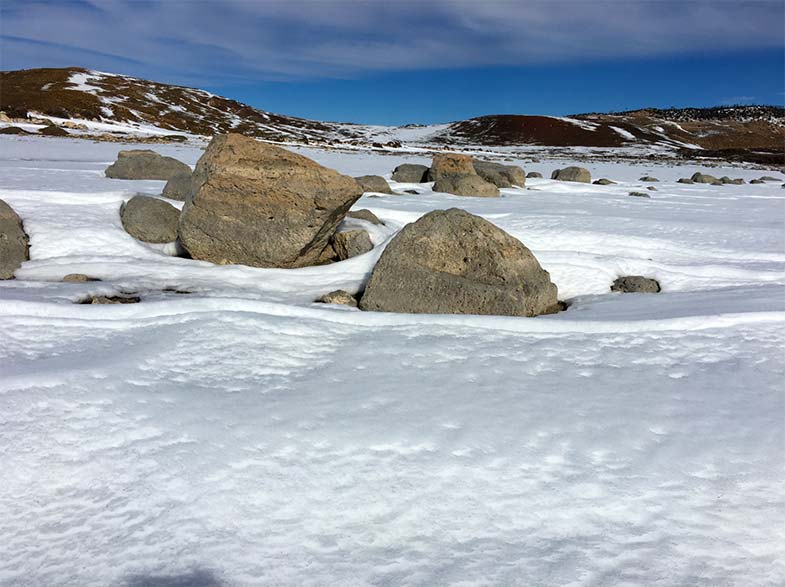
Does It Snow in Africa in December?
African weather in December is mostly hot and sunny. However, as a diverse continent, its regions experience snow in different months. African winter is also primarily dry and bitter cold.
South Africa has snow from June to August, its winter season, with an average temperature of 20°C. It’s mostly dry and moisture-less, focusing on mountain regions.
Kenya in East Africa receives both snow and rain from March to December, but atop Mount Kenya, snow falls all year round.
The Atlas Mountains have snow from November to April and September to June on the peaks.
Conclusion: Does It Snow in Africa?
Many parts of Africa seldom experience snow because they straddle the equator, and the continent is the hottest on the planet. However, some parts of Africa, the second largest and most populous continent, can be as snowy as November in Toronto.
Does it snow in Africa? Yes, it does, and it’s time to debunk the stereotypical notion about snow in Africa. Join skiers from across the globe as they favor the mountains in the extreme north like the Atlas Mountains of Algeria for their trusted ski resorts. Even without the snow, experience one of Africa’s winter sun destinations in Tanzania, Kenya, or South Africa. Because in Africa, winter fun isn’t always about the snow.
